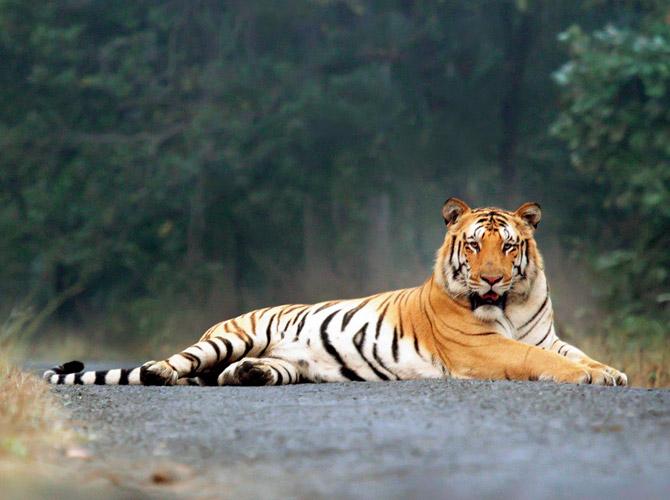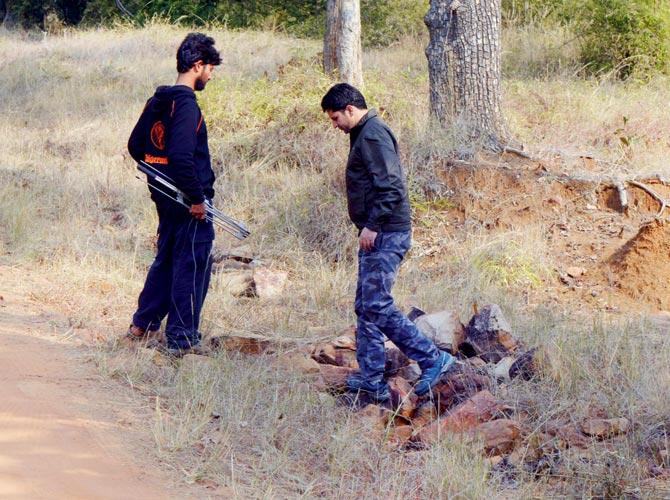This is the first time since Jai disappeared from Umred Karhandla in April 2016 that officials have brought up the possibility of the iconic tiger's death


This old picture of Jai shows that he wasn't just any big cat, but one of the biggest. Pics/Vinit Arora
It has been over two years since Jai - one of the nation's biggest and most beloved tigers - went missing, and wildlife authorities have now admitted that we may have lost him forever. An investigative report from the National Tiger Conservation Authority (NTCA) has raised serious questions about the tiger's monitoring by the Wildlife Institute of India (WII), which had delayed launching a search operation.
ADVERTISEMENT
"Considering the available information, and in absence of concrete evidence about the fate of Jai, this committee is of the view that it is very difficult to pinpoint the exact cause for his sudden disappearance, and death can't be ruled out," stated the report, which is yet to be presented in the public domain. Jai's disappearance on April 18, 2016, was a major blow to the wildlife community. The seven-year-old was not just any big cat, but one of the biggest in the country. He was the most famous inhabitant of the Umred Karhandla Wildlife Sanctuary (UKWS), and had made the park popular during his stay there.

Dr Bilal Habib had radio-collared Jai
Radio silence
Equally important is the debate about his radio collar: the monitoring device should have made it easy to track down the missing tiger, but it stopped functioning when he disappeared. The NTCA also raised questions about the team - led by senior scientist Dr Bilal Habib - that had collared and was monitoring Jai. His team did not raise the alarm when Jai's radio collar went silent in April 2016. In fact, the authorities only launched a full-fledged search operation for him in July 2016, after an increasing number of people began to comment on the tiger's absence.
mid-day accessed the NTCA report, titled 'Missing Tigers of Umred Karhandla Wildlife Sanctuary (UKWS) and Navegaon Nagzira Tiger Reserve', which states: "There was a delay in starting intensive search operations following Jai's disappearance on April 18, 2016.
"According to forest officials, the initial disappearance was explained as a natural process. The officials and researchers were under the impression that Jai might have gone out of UKWS (as he had done in the past) and would return after a few weeks. This general belief seems to affect the judgment to act in time to investigate the disappearance."
On the other hand, a forest department official said, "From April 18, 2016, to July 2, 2016, we conducted search operation in and around the sanctuary. Dr Bilal and his team had done extensive camera trapping in UKWS and Brahmapuri Forest Division."
Strong tiger, weak theory
Dr Habib's explanation for Jai's disappearance at the time was that Jai might have been pushed out his territory by another tiger. However, wildlife lovers did not buy this theory, as Jai was the dominant tiger in the area, and was unlikely to have been ousted by another male.
The NTCA report also rejected Dr Habib's theory: "There are issues with respect to the explanation given by Dr Habib... In case of UKWLS, the subadult male tigers are too young (18 to 24 months) to pose a challenge to an established tiger in his prime, and there is no report of territorial fight or aggression between territorial male and subadult tigers. There is no record of adult male tigers giving away territory without any aggressive interaction."
Some wildlife lovers alleged that Dr Habib's theory was intended to hide their shortcomings and infectiveness in tracking the collared tiger. Speaking to mid-day, a wildlife photographer said, "It was the job of the WII team that had radio-collared Jai to keep track of his activity. There have been serious lapses on the part of the team, because of which there was a delay in starting the search operation. They should be held accountable this."
Wildlife activist Dr Sarita Subramanian said, "The NTCA report only reiterates the belief wildlife lovers have always expressed - radio collaring is a futile exercise unless it is substantiated with real-time data sent to the ground staff for monitoring in real time." Dr Bilal Habib said, "I have not read or have any copy of that report."
Also read: Team of three to probe missing tiger Jai's case
 Subscribe today by clicking the link and stay updated with the latest news!" Click here!
Subscribe today by clicking the link and stay updated with the latest news!" Click here!







